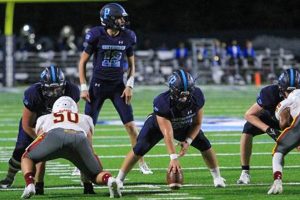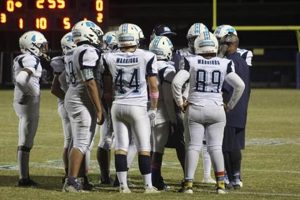Platelet-rich plasma (PRP) therapy is an emerging treatment modality in sports medicine, particularly at the secondary school level. It involves extracting a patient’s blood, concentrating the platelets, and then re-injecting the platelet-rich plasma into the injured area. This concentrated solution contains growth factors that are believed to accelerate healing of injured tendons, ligaments, muscles, and joints, allowing young athletes to potentially return to competition more quickly.
The potential for accelerated healing offers significant advantages for adolescent athletes facing the pressures of a limited high school playing career. Minimizing recovery time can mean the difference between a missed season and a successful one. This is especially important considering the significant role athletics can play in college applications and scholarships. While still a relatively new area of study in younger populations, the potential for PRP therapy to reduce long-term complications from injuries is a subject of growing interest in the sports medicine community. Research is ongoing to establish clear guidelines and protocols for its safe and effective use in adolescent athletes.
This article will further explore the potential benefits and risks associated with this treatment, discuss the current research surrounding its use in young athletes, and delve into ethical considerations surrounding its application in competitive high school sports.
Tips for Considering Platelet-Rich Plasma Therapy in High School Football
Navigating the complexities of sports injuries in young athletes requires careful consideration of various treatment options. The following tips provide guidance for those exploring platelet-rich plasma (PRP) therapy in the context of high school football.
Tip 1: Consult with Qualified Medical Professionals: Seeking guidance from experienced sports medicine physicians, orthopedists, or physiatrists specializing in adolescent athletes is crucial. A thorough evaluation should precede any decision regarding PRP therapy.
Tip 2: Understand the Science Behind PRP: Familiarizing oneself with the biological mechanisms of PRP therapy, including its potential benefits and limitations, is essential for making informed decisions.
Tip 3: Consider the Specific Injury: PRP therapy may be more effective for certain types of injuries than others. Its efficacy for muscle strains, ligament sprains, and tendonitis is a subject of ongoing research.
Tip 4: Assess the Athlete’s Overall Health: Underlying health conditions or medications could influence the suitability of PRP therapy. A comprehensive medical history should be reviewed.
Tip 5: Weigh the Risks and Benefits: While generally considered safe, PRP injections carry potential risks, including infection, pain at the injection site, and nerve damage. These risks must be weighed against the potential benefits.
Tip 6: Manage Expectations Realistically: PRP therapy is not a guaranteed solution for all injuries. Recovery timelines vary, and factors such as age, injury severity, and individual healing rates play a significant role.
Tip 7: Research Qualified Providers: Selecting experienced practitioners with a proven track record in administering PRP therapy is critical for ensuring safety and efficacy.
Tip 8: Factor in Financial Considerations: PRP therapy can be expensive and may not be covered by all insurance plans. Understanding the financial implications is important for families.
By carefully considering these tips, parents, coaches, and young athletes can make more informed choices regarding the potential use of PRP therapy for sports injuries in high school football. Open communication with healthcare providers and a thorough understanding of the procedure are essential for maximizing the potential benefits and minimizing risks.
This information serves as a starting point for further exploration of PRP therapy in the context of high school football. Consulting with qualified medical professionals remains paramount before making any treatment decisions.
1. Injury Recovery
Injury recovery plays a vital role in high school football, impacting both individual athletes and team performance. The demanding nature of the sport, combined with the physical developmental stage of adolescent athletes, creates a heightened risk of injuries ranging from minor sprains and strains to more severe ligament tears and fractures. Effective and timely recovery from these injuries is essential for minimizing lost playing time, preventing long-term complications, and ensuring the athlete’s overall well-being. Platelet-rich plasma (PRP) therapy has emerged as a potential treatment modality to enhance injury recovery in this context. By injecting a concentrated solution of platelets derived from the athlete’s own blood into the injured area, PRP therapy aims to stimulate the body’s natural healing processes. The growth factors present in platelets are believed to accelerate tissue repair and reduce inflammation, potentially leading to faster recovery times. For example, a high school football player suffering from a hamstring strain might undergo PRP injections to promote faster healing and enable an earlier return to the field.
The potential for accelerated recovery offered by PRP therapy holds significant implications for high school football players. A shortened recovery period can mean the difference between missing a crucial game or an entire season and returning to competition in peak physical condition. This is particularly important considering the limited timeframe of a high school athlete’s career and the potential impact of athletic performance on college scholarships and future opportunities. However, it is crucial to acknowledge that the efficacy of PRP therapy in adolescent athletes is still under investigation, and further research is needed to fully understand its long-term effects and establish optimal treatment protocols. While anecdotal evidence and some studies suggest positive outcomes, larger, controlled studies are necessary to confirm these findings and address any potential risks associated with the procedure.
In summary, injury recovery is a critical aspect of high school football. PRP therapy represents a promising avenue for potentially enhancing the healing process and minimizing the impact of injuries on young athletes’ careers. However, careful consideration of the current research, potential risks, and ethical implications is necessary to ensure responsible and informed application of this treatment modality. Ongoing research and collaboration between medical professionals, coaches, and athletes will contribute to a more comprehensive understanding of PRP therapy’s role in optimizing injury recovery in high school football.
2. Growth Factor Stimulation
Growth factor stimulation lies at the core of platelet-rich plasma (PRP) therapy’s potential benefits in high school football. PRP, derived from a patient’s own blood, contains a concentrated collection of platelets, which are naturally rich in growth factors. These growth factors play a crucial role in tissue repair and regeneration. When PRP is injected into an injured area, these growth factors are released, initiating and accelerating the body’s natural healing cascade. This stimulation can impact various tissues relevant to football injuries, including tendons, ligaments, muscles, and cartilage.
The precise mechanisms by which growth factors stimulate healing are complex and multifaceted. They promote cell proliferation and differentiation, attract reparative cells to the injury site, and stimulate the production of extracellular matrix components, essential for tissue rebuilding. In the context of high school football, this accelerated healing can translate to quicker recovery times for common injuries like hamstring strains, ACL sprains, and rotator cuff tears. For instance, a football player with a strained hamstring might experience faster healing and return to play sooner with PRP injections compared to traditional conservative management. While individual responses vary, the potential to reduce recovery time offers significant advantages in a time-sensitive competitive environment.
Despite the promise of growth factor stimulation through PRP, several factors warrant careful consideration. The optimal PRP preparation protocols, injection techniques, and post-injection rehabilitation strategies are still being refined. Furthermore, individual responses to PRP therapy can vary based on factors like age, overall health, and the specific nature of the injury. Ongoing research aims to optimize treatment protocols and identify predictive factors for treatment success. Understanding the complex interplay of growth factors in tissue regeneration remains crucial for harnessing the full potential of PRP therapy in high school football and ensuring its safe and effective application.
3. Adolescent Athlete Health
Adolescent athlete health represents a critical consideration in the context of platelet-rich plasma (PRP) therapy in high school football. The still-developing musculoskeletal system of adolescent athletes presents unique challenges and considerations compared to adult athletes. Growth plates, areas of developing cartilage near the ends of long bones, are particularly vulnerable to injury and require careful management. The potential impact of PRP injections on these growth plates is an area of ongoing research. Furthermore, the hormonal fluctuations and rapid growth spurts characteristic of adolescence can influence healing processes and tissue responses to treatments like PRP. Therefore, understanding the specific physiological and developmental context of adolescent athletes is essential for responsible application of PRP therapy.
The long-term effects of PRP injections on adolescent athletes remain a subject of investigation. While early research suggests that PRP is generally safe, more extensive, long-term studies are needed to fully understand its potential impact on growth and development. For example, researchers are investigating whether PRP injections could affect growth plate closure or long-term joint health. This research is crucial for establishing appropriate treatment protocols and guidelines to ensure the safety and well-being of young athletes. Furthermore, ethical considerations surrounding the use of PRP in adolescents must be addressed, particularly regarding informed consent processes and balancing potential benefits with unknown long-term risks. Real-life examples include cases where young athletes have experienced accelerated healing of sports injuries following PRP injections, allowing them to return to competition sooner than anticipated. However, it’s important to acknowledge that not all athletes respond similarly to PRP, and further research is needed to identify factors that predict treatment success and potential risks.
Careful consideration of adolescent athlete health is paramount when considering PRP therapy in high school football. A comprehensive approach involving collaboration between sports medicine physicians, athletic trainers, parents, and the athletes themselves is crucial. Thorough evaluations, informed consent processes, and adherence to emerging best practices are essential for maximizing the potential benefits of PRP while safeguarding the long-term health and well-being of young athletes. Ongoing research and open communication within the sports medicine community will contribute to a more complete understanding of the role of PRP in optimizing adolescent athlete health and injury management in high school football.
4. Ethical Implications
Platelet-rich plasma (PRP) therapy in high school football presents complex ethical implications that require careful consideration. While PRP offers potential benefits for injury recovery, its application in young athletes raises concerns regarding informed consent, coercion, equitable access, and the potential for misuse in a competitive environment. Navigating these ethical challenges is crucial for ensuring the responsible and ethical use of PRP in high school sports.
- Informed Consent and Adolescent Autonomy
Obtaining truly informed consent for PRP therapy in high school athletes presents challenges. Adolescents may not fully grasp the complexities of the procedure, potential risks, and alternative treatment options. Parental pressure, coach influence, and the desire to return to play quickly can compromise autonomous decision-making. Clear, age-appropriate information and ensuring adolescents have a genuine opportunity to express their preferences without coercion are essential. For instance, a physician must ensure a young athlete understands the procedure isn’t guaranteed to be effective and that alternative treatments exist, even if they might entail longer recovery times.
- Fair Access and Equity
PRP therapy’s cost can create disparities in access among high school athletes. Those from affluent families may have easier access to the treatment, potentially creating an uneven playing field. This raises concerns about fairness and equity, particularly if PRP offers a competitive advantage. Consider a scenario where a school in a wealthier district provides PRP therapy to its athletes, while a school in a less affluent area cannot afford to offer the same treatment, creating a potential competitive imbalance.
- Pressure to Use PRP and Coercion
The competitive nature of high school sports can create pressure on young athletes to utilize PRP therapy, even if they are hesitant or have concerns. Coaches, parents, or even teammates might inadvertently exert pressure, creating an environment where athletes feel compelled to undergo the procedure to maintain their position on the team or secure college scholarships. A student athlete feeling pressured to use PRP to avoid losing their starting position, despite concerns about potential side effects, exemplifies this ethical dilemma.
- The Definition of “Enhancement” vs. “Treatment”
The use of PRP raises questions about the blurry line between injury treatment and performance enhancement. While PRP is primarily intended to accelerate healing from injuries, it could potentially be used to enhance performance beyond pre-injury levels. This raises ethical concerns about fairness and the potential for misuse. For instance, if a healthy athlete uses PRP to strengthen a tendon beyond its normal capacity, this could be considered performance enhancement rather than injury treatment, creating an unfair advantage.
These ethical considerations highlight the need for careful regulation, transparent communication, and ongoing ethical reflection regarding the use of PRP in high school football. Balancing the potential benefits of PRP with the need to protect the health, autonomy, and equitable opportunities of young athletes remains a complex challenge requiring ongoing discussion and collaboration among stakeholders. As research continues and the use of PRP evolves, these ethical considerations must remain at the forefront of decision-making processes to ensure the responsible and ethical application of this emerging technology in the high school sports environment.
5. Return-to-play Protocols
Return-to-play (RTP) protocols are crucial for managing injuries in high school football, particularly when considering interventions like platelet-rich plasma (PRP) therapy. These protocols provide structured guidelines for athletes’ gradual return to sports activities after injury, aiming to minimize re-injury risk and ensure safe, effective recovery. PRP therapy, with its potential to accelerate healing, can influence RTP timelines and requires careful integration into these protocols. Understanding this interplay is crucial for optimizing athlete care and promoting safe return to competition.
- Graduated Progression
RTP protocols typically involve a graduated progression of activities, starting with low-impact exercises and gradually increasing intensity and complexity. This phased approach allows athletes to regain strength, range of motion, and sport-specific skills progressively. Following PRP injections for a hamstring strain, a football player might begin with gentle range-of-motion exercises, progressing to light jogging, then to sprinting and agility drills, before full participation in practice and games. This gradual progression allows the healing tissues to adapt to increasing loads, minimizing re-injury risk.
- Clinical Evaluation and Monitoring
Regular clinical evaluations by healthcare professionals are essential components of RTP protocols. These evaluations assess healing progress, monitor for complications, and guide the athlete’s progression through the protocol phases. In the case of PRP therapy, clinicians might monitor the injection site for inflammation, assess pain levels, and evaluate functional improvements through physical examinations and imaging studies. This ongoing monitoring ensures the athlete progresses safely and effectively through the RTP protocol. For example, a physician might use ultrasound imaging to assess hamstring healing after PRP injection, informing decisions about increasing activity levels.
- Individualized Approach
RTP protocols should be individualized based on the athlete’s specific injury, healing response, and sport-specific demands. Factors like age, position, and pre-injury conditioning level influence the design and timeline of the protocol. A quarterback recovering from a rotator cuff injury treated with PRP might have a different RTP protocol than a lineman recovering from an ankle sprain, even if both received PRP therapy. The quarterback’s protocol might focus on regaining throwing mechanics and shoulder stability, while the lineman’s protocol emphasizes weight-bearing and lower-body strength.
- Collaboration and Communication
Effective RTP protocols require clear communication and collaboration among healthcare professionals, coaches, athletic trainers, and the athlete. Open communication ensures everyone involved understands the protocol’s goals, timelines, and specific requirements. This collaborative approach is especially important when incorporating PRP therapy, as it necessitates coordination between the physician administering the injection and the athletic trainer overseeing the rehabilitation program. For example, the physician might provide specific guidelines for activity restrictions following the PRP injection, which the athletic trainer then incorporates into the athlete’s daily rehabilitation plan.
These facets of RTP protocols are intrinsically linked to the use of PRP therapy in high school football. PRP’s potential to influence healing timelines necessitates careful integration into RTP protocols to ensure safe and effective return to play. A collaborative, individualized, and evidence-based approach to RTP protocols, informed by ongoing clinical evaluations, is essential for optimizing outcomes and minimizing risks associated with PRP therapy and subsequent return to competition in young athletes. Further research investigating the interplay between PRP and RTP protocols can refine these guidelines and enhance athlete care in high school football.
6. Long-term effects research
Long-term effects research is crucial for understanding the implications of platelet-rich plasma (PRP) therapy in high school football. Current research primarily focuses on short-term outcomes, such as pain reduction and return-to-play timelines. However, the long-term effects of PRP injections on the developing musculoskeletal system of adolescent athletes remain largely unknown. This knowledge gap necessitates rigorous long-term studies to assess potential risks and benefits, ensuring responsible application of this emerging therapy. Investigating areas like growth plate development, cartilage health, and long-term joint stability is essential. For instance, a long-term study might track athletes who received PRP injections for several years, monitoring for any adverse effects on joint health or growth. Another study might compare the long-term outcomes of athletes treated with PRP versus those treated with traditional conservative management for similar injuries.
Such research holds significant practical implications for high school athletes, their families, and the medical professionals who care for them. Understanding the long-term effects can inform clinical decision-making, refine treatment protocols, and guide return-to-play decisions. This information empowers stakeholders to weigh the potential benefits of PRP against potential long-term risks, facilitating informed consent processes and responsible use of the therapy. For example, if long-term research reveals a potential risk of premature growth plate closure associated with PRP injections in certain age groups, physicians can adjust treatment protocols or recommend alternative therapies for those athletes. Conversely, if long-term studies demonstrate significant benefits of PRP in reducing the risk of osteoarthritis later in life, this information can strengthen the rationale for its use in specific injury scenarios.
The lack of comprehensive long-term data presents a significant challenge in the ethical and effective application of PRP therapy in high school football. Addressing this challenge requires substantial investment in research, standardized data collection methods, and collaborative efforts among researchers, clinicians, and sports organizations. Prioritizing long-term effects research will not only enhance understanding of PRP’s role in adolescent sports medicine but also contribute to the development of evidence-based guidelines, safeguarding the health and well-being of young athletes while maximizing the potential benefits of this promising therapy. This research will contribute significantly to a more comprehensive understanding of PRP’s place in the long-term health and athletic development of young athletes.
7. Informed Consent Processes
Informed consent processes are paramount in the ethical administration of platelet-rich plasma (PRP) therapy to high school football players. These processes ensure that young athletes and their guardians understand the procedure, potential benefits, risks, and alternative treatment options before making a decision. Given the developing cognitive abilities of adolescents and the complexities of PRP therapy, meticulous attention to informed consent is crucial for protecting athlete autonomy and well-being.
- Understanding the Procedure
Explaining PRP therapy in clear, age-appropriate language is essential. This includes describing the process of blood draw, platelet separation, and injection, emphasizing that the injected substance is derived from the athlete’s own blood. Visual aids, diagrams, and simple explanations can enhance understanding. For example, showing a short video of the PRP preparation process can help athletes visualize what to expect. Clarifying that PRP is not a guaranteed solution and that individual responses vary is also crucial.
- Discussing Potential Benefits and Risks
Openly discussing the potential benefits of PRP, such as accelerated healing and reduced pain, while also addressing potential risks, like infection, nerve damage, and the lack of long-term data on adolescents, is critical. Providing realistic expectations about recovery timelines and the possibility that PRP might not be effective is essential for informed decision-making. For instance, explaining that while PRP might accelerate healing, the athlete will still need to adhere to a rehabilitation program and that full recovery could take weeks or months is necessary.
- Exploring Alternative Treatments
Informed consent requires presenting alternative treatment options, such as physical therapy, rest, or other conservative management strategies. Comparing the potential benefits and risks of PRP with those of alternative treatments allows athletes and their families to make well-informed decisions based on their individual circumstances and preferences. For example, explaining that physical therapy, while potentially requiring a longer recovery period, might be less invasive and carry fewer risks than PRP, offers a balanced perspective.
- Assuring Voluntary Participation
Emphasizing the voluntary nature of PRP therapy and assuring athletes they will not face negative consequences for declining the treatment is crucial. Creating a safe space for open discussion and questions, free from coercion from coaches, teammates, or parents, is paramount for ensuring autonomous decision-making. For example, a physician should privately meet with the athlete and their guardian to discuss the treatment options, ensuring the athlete feels comfortable expressing their preferences without external pressure.
These facets of informed consent contribute significantly to the ethical and responsible administration of PRP therapy in high school football. By adhering to these principles, medical professionals can ensure young athletes’ autonomy and well-being are protected while providing them with the necessary information to make informed decisions about their healthcare. Continuously evaluating and refining informed consent processes, incorporating the latest research and ethical considerations, is essential for responsible advancement of PRP therapy in the context of high school sports. This meticulous approach ensures the athlete’s best interests remain central to all treatment decisions.
Frequently Asked Questions about PRP in High School Football
This FAQ section addresses common inquiries regarding platelet-rich plasma (PRP) therapy in the context of high school football injuries. The information provided aims to clarify potential benefits, risks, and considerations associated with this emerging treatment modality.
Question 1: How does PRP therapy differ from other treatments for sports injuries?
PRP therapy distinguishes itself by utilizing the body’s own healing mechanisms. Instead of relying on external medications or interventions, PRP harnesses the growth factors present in an individual’s blood to stimulate tissue repair and regeneration. This approach aims to accelerate the natural healing process, potentially shortening recovery times compared to traditional conservative management.
Question 2: What types of high school football injuries might benefit from PRP therapy?
PRP therapy shows promise for various musculoskeletal injuries common in football, including muscle strains, ligament sprains, tendonitis, and joint injuries. However, the efficacy of PRP can vary depending on the specific injury, its severity, and individual patient factors. Consulting with a qualified sports medicine physician is crucial to determine the suitability of PRP for a particular injury.
Question 3: What are the potential risks associated with PRP injections in young athletes?
While generally considered safe, PRP injections carry potential risks, including infection at the injection site, nerve damage, bleeding, and pain. The adolescent musculoskeletal system, particularly growth plates, requires careful consideration, and the long-term effects of PRP injections in young athletes are still under investigation. Open communication with a physician regarding potential risks is essential.
Question 4: How long does it take to see results from PRP therapy, and what is the typical recovery timeline?
The response to PRP therapy varies among individuals. Some athletes experience noticeable improvement within a few weeks, while others might require several months. The overall recovery timeline depends on the specific injury, its severity, and individual healing factors. Adherence to prescribed rehabilitation protocols and post-injection care instructions is crucial for optimizing recovery outcomes.
Question 5: Is PRP therapy covered by insurance, and what are the typical costs associated with the procedure?
Insurance coverage for PRP therapy varies depending on the insurance provider and specific policy. It is essential to contact the insurance company to determine coverage details. The cost of PRP injections can vary based on factors such as the provider, geographic location, and the specific injury being treated. Obtaining a clear understanding of potential out-of-pocket expenses before proceeding with the procedure is advisable.
Question 6: What role does rehabilitation play following PRP injections for a football injury?
Rehabilitation plays a crucial role in optimizing outcomes after PRP injections. A structured rehabilitation program, tailored to the specific injury and the athlete’s individual needs, is essential for restoring strength, range of motion, and function. Working closely with a physical therapist or athletic trainer is crucial for maximizing recovery and ensuring a safe return to athletic activity.
These FAQs offer a starting point for understanding PRP therapy’s role in high school football. Consulting with a qualified medical professional is essential to discuss individual circumstances, address specific concerns, and make informed decisions about appropriate treatment strategies.
For further information and resources regarding sports injuries and treatment options, please consult with a sports medicine physician or refer to reputable medical organizations specializing in sports medicine.
PRP and High School Football
This exploration of platelet-rich plasma (PRP) therapy within the context of high school football underscores the complexities surrounding its application. While PRP offers potential advantages for accelerating injury recovery and minimizing lost playing time, significant considerations warrant careful attention. The developing musculoskeletal system of adolescent athletes, ethical implications regarding informed consent and equitable access, and the need for robust long-term research highlight the importance of a cautious and evidence-based approach. Balancing the potential benefits of PRP with the imperative to protect young athletes’ long-term health and well-being requires ongoing dialogue and collaboration among stakeholders.
Responsible implementation of PRP therapy in high school football necessitates ongoing research, standardized treatment protocols, and comprehensive informed consent processes. Further investigation into long-term effects, coupled with open communication among medical professionals, coaches, athletes, and families, will contribute to a more informed understanding of PRP’s role in managing sports injuries. This collaborative approach will help ensure that decisions regarding PRP therapy prioritize the ethical and holistic development of young athletes while maximizing their potential for safe and successful participation in high school football.







